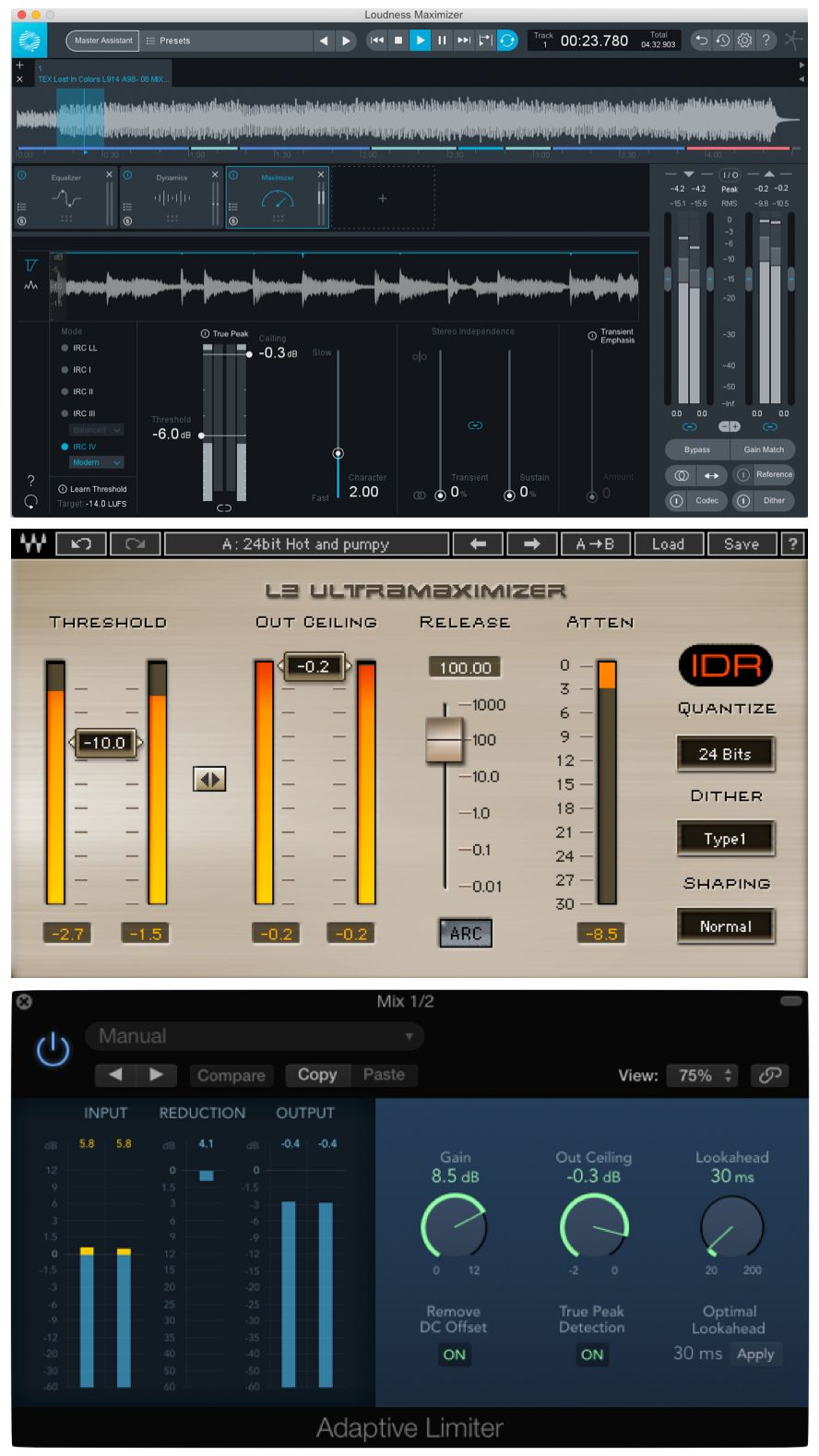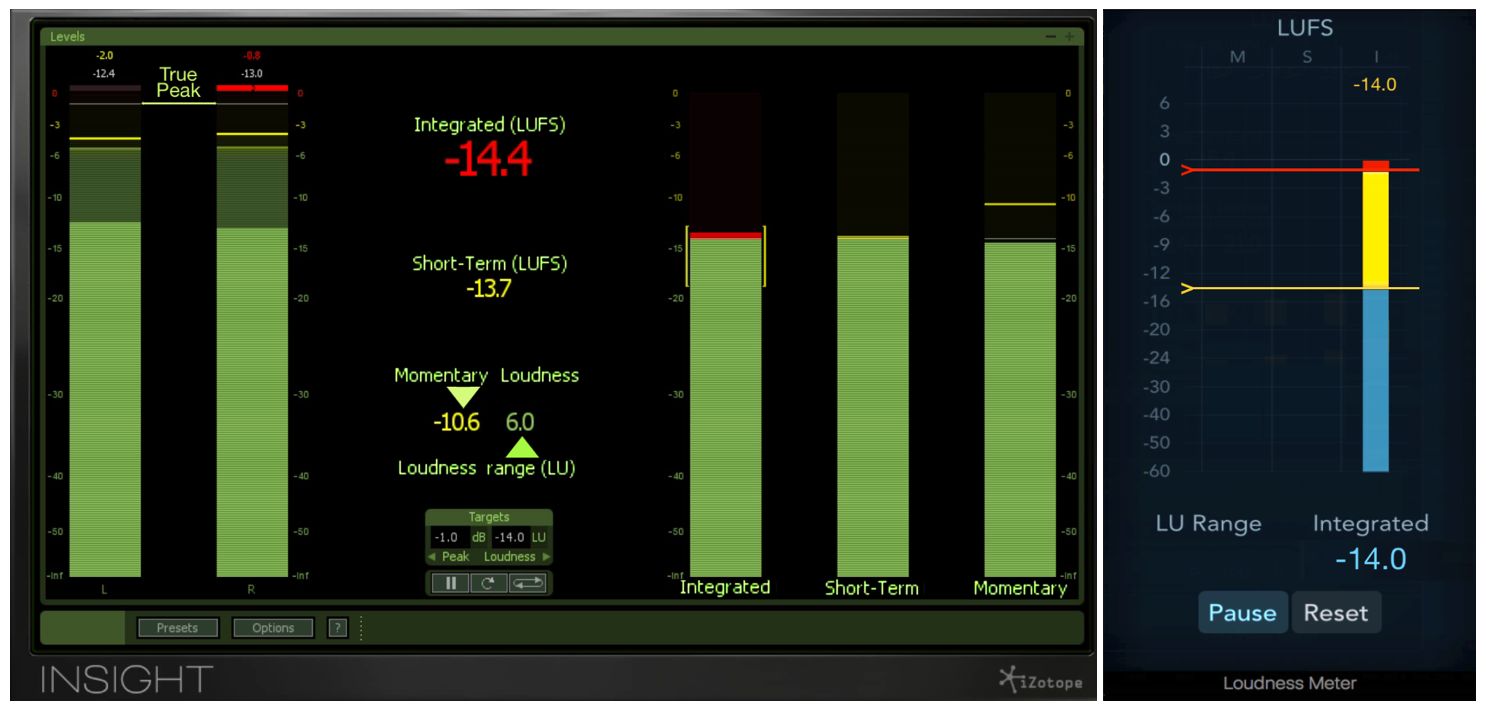Loudness, LUFS, RMS, and dBFS are audio measurement scales used to quantify sound levels and dynamics accurately. LUFS measures perceived loudness, RMS represents average signal levels, and dBFS denotes digital amplitude levels.
When it comes to audio production and mastering, understanding the differences between Loudness LUFS, RMS, and dBFS is crucial. Each measurement scale plays a unique role in ensuring optimal sound quality and consistency in a audio recording or mix. By grasping the nuances of these metrics, audio engineers can effectively manage sound dynamics, loudness levels, and overall quality, resulting in a professional and polished audio product.
Let’s delve deeper into the significance of Loudness LUFS, RMS, and dBFS in modern audio production.

Credit: ask.audio
The Science Of Sound Measurement
Explore the science of sound measurement with a focus on loudness LUFS, RMS, and dBFS. Understand the differences and applications of these measurements in audio engineering and production. Learn how to accurately measure and control sound levels for optimal audio quality.
Understanding Loudness Lufs
Loudness LUFS measures the perceived loudness of audio signals.
Loudness LUFS accounts for human perception of sound and not just peak levels.
Exploring Rms And Dbfs
RMS quantifies the average power of an audio signal over time.
dBFS measures the peak level of a digital audio signal relative to the maximum possible level.
RMS and dBFS are essential metrics in audio production for dynamic range control.

Credit: ask.audio
Applications In Audio Production
Loudness LUFS Vs RMS Vs dBFS have various applications in audio production that are essential for creating high-quality music and audio content.
Using Lufs For Streaming Platforms
LUFS is crucial for ensuring consistent audio levels across different tracks on streaming platforms like Spotify and Apple Music.
Rms And Dbfs In Mixing And Mastering
RMS and dBFS play a significant role in the mixing and mastering process to maintain optimal audio levels and prevent clipping.
Understanding Perception Of Loudness
The sound and loudness of an audio signal are crucial components when it comes to engaging an audience’s auditory experience. Understanding the perception of loudness in terms of Loudness LUFS vs RMS vs dBFS can significantly impact how your content is perceived.
Psychoacoustic Effects On Perception
Psychoacoustics, the study of how humans perceive sound, plays a vital role in how loudness is interpreted. Certain frequencies and amplitude levels can have differing effects on the human ear, impacting how loud a sound is perceived to be. This understanding is essential when striving to create content that resonates with your audience.
Impact On Audience Experience
The perception of loudness, whether measured in LUFS, RMS, or dBFS, directly influences the audience’s overall experience. By optimizing and understanding these measures, you can ensure that your content makes the desired impact, leaving a lasting impression on your audience.
Loudness Wars And Industry Standards
When it comes to the world of audio production and mastering, understanding the concepts of loudness LUFS, RMS, and dBFS is crucial. These terms play a significant role in achieving the desired sound quality and ensuring that the audio tracks are consistent across various platforms and formats. Additionally, the presence of loudness wars and the need for industry standards make it all the more important to grasp the differences and implications of these measurements.
Effects Of Competitive Loudness Maximization
One of the primary reasons behind the loudness wars is the desire for songs to be played at a consistent, high-volume level. Music producers and artists strive to make their tracks stand out in the crowd, often by pushing them to the limit of loudness. However, this competitive loudness maximization has its consequences. The overall sound quality may become compromised with increased distortion, reduced dynamics, and less headroom for the audio to breathe.
This pursuit of extreme loudness can also create problems in the broadcasting or streaming domain. Platforms like Spotify and YouTube may dynamically adjust the loudness of tracks to maintain a consistent listening experience for their users. As a result, if a track is already pushed to its maximum loudness, it may end up sounding overly compressed or even be attenuated, losing its impact compared to other tracks with more balanced loudness levels.
Evolving Standards And Recommendations
In response to the negative effects of the loudness wars, there have been evolving standards and recommendations established within the audio industry. These guidelines are aimed at achieving a more balanced and consistent audio experience for listeners across various platforms and devices.
One of the significant developments in recent years is the introduction of Loudness Units Full Scale (LUFS). LUFS is a measurement that takes into account the perceived loudness of an audio track and helps regulate its levels. By utilizing LUFS, audio professionals can maintain a more consistent loudness level across different tracks, ensuring a smoother transition between songs and preventing listener fatigue.
Another important metric is the Root Mean Square (RMS) which provides insight into the average power of an audio waveform. By monitoring and controlling RMS levels, engineers can effectively balance the dynamics of a track without sacrificing its overall loudness or causing undesirable distortion.
Lastly, we have Decibels Full Scale (dBFS), which represents the digital resolution of an audio signal. Understanding dBFS is crucial in avoiding clipping and ensuring that audio remains within the designated range of digital representation.
In conclusion, the loudness wars and the ongoing pursuit of industry standards have highlighted the importance of understanding and implementing measurements like LUFS, RMS, and dBFS. By adhering to these guidelines, audio professionals can achieve a more balanced and dynamic sound, ultimately enhancing the listening experience for audiences worldwide.
Optimizing Sound For Various Platforms
When it comes to sound optimization for different media platforms, understanding the concepts of Loudness LUFS, RMS, and dBFS is crucial. These parameters play a vital role in ensuring that your audio content sounds optimal and consistent across various platforms. However, adapting your sound to different media can be a challenge. In this article, we will explore the importance of adapting loudness for different media and discuss the challenges and solutions in sound optimization.
Adapting Loudness For Different Media
Adapting the loudness of your audio content according to the requirements of different media platforms is essential to provide an enjoyable listening experience to your audience. Each platform has specific loudness standards that content creators must adhere to in order to ensure that their audio content is compatible and consistent with the rest of the content on that platform.
Here are some common loudness standards for different media platforms:
| Media Platform | Loudness Standard |
|---|---|
| Television Broadcast | -23 LUFS |
| Streaming Platforms (e.g., Spotify) | -14 LUFS |
| YouTube | -13 LUFS |
By adjusting the loudness levels of your audio content, you can ensure that it meets the loudness requirements of the platform it will be published on. This way, your content will have a consistent volume level, regardless of where it is being played.
Challenges And Solutions In Sound Optimization
Optimizing sound for different media platforms can be challenging due to the varying loudness requirements and the technical constraints imposed by each platform. Here are some common challenges and their corresponding solutions:
- Challenge: Limited Dynamic Range
Solution: Utilize dynamic range compression techniques to reduce the difference between the softest and loudest parts of your audio content. This helps maintain a consistent volume level throughout, ensuring that no parts are too soft or too loud.
- Challenge: Audio Clipping
Solution: Avoid clipping by carefully managing the peaks and ensuring that the loudest parts of your audio do not exceed the maximum allowable level. This can be achieved through peak limiting or using dynamic range compression techniques.
- Challenge: Compatibility with Different Devices
Solution: Test your audio content on different devices and platforms to ensure that it sounds good and is compatible across all. Consider using a reference system or software that simulates different listening environments to accurately assess the sound quality.
With these solutions in mind, you can overcome the challenges of sound optimization for different media platforms and deliver an exceptional audio experience to your audience.

Credit: www.audiomixingmastering.com
Frequently Asked Questions Of Loudness Lufs Vs Rms Vs Dbfs
What Is The Difference Between Loudness Lufs, Rms, And Dbfs?
Loudness LUFS is a measure of perceived loudness in audio, RMS is a measure of the average power, and dBFS is a measure of the digital level. LUFS tells you how loud something sounds, RMS measures the average loudness over time, and dBFS tells you the digital level of the audio signal.
Why Are Loudness Lufs, Rms, And Dbfs Important In Audio Production?
Loudness LUFS, RMS, and dBFS are important in audio production to ensure consistency in volume levels, avoid distortion, and meet broadcasting standards. They help achieve balanced and professional-sounding audio across different platforms and devices.
How Do I Measure Loudness Lufs, Rms, And Dbfs?
Loudness LUFS is measured using specialized loudness meters, such as the ITU-R BS. 1770 standard. RMS can be calculated using audio software or plugins that provide RMS measurements. DBFS is the digital value of an audio signal, typically displayed on meters in digital audio workstations.
Can Loudness Lufs, Rms, And Dbfs Affect The Quality Of My Audio?
Loudness LUFS, RMS, and dBFS themselves do not affect the quality of the audio. However, improper management of these measurements can lead to audio that sounds too loud, distorted, or lacking in dynamic range. It is important to understand and use these measurements effectively to maintain the desired audio quality.
Conclusion
Understanding the differences between loudness LUFS, RMS, and dBFS is crucial for audio professionals. Each measurement serves its own purpose, and knowing how to use them effectively can greatly improve the quality of your audio productions. By mastering these concepts, you can ensure that your music and sound projects meet industry standards and sound fantastic across all platforms.